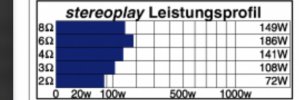Ro808,
I have the CT8150 on the back 4 channels and 4 atmos channels. The NC400 monoblock on on the main 3 channels. I have not done a comparison of the two types of amplifiers on the same speakers. An ear to the speaker tweeter test - the NC400 is quieter but I need to put my ear against the speaker for both amplifiers. So, the CT8150 which has balance inputs has a pretty low noise floor. For the surround and height channels, I am very pleased with the CT8150. (much better than the Crown XLS150 units I had). For sound quality, I had guests at the house for a party and put in Led Zeppelin 2007 Concert Bluray on the projector/home theater (played in Dolby Atmos). The guests were amazed with the music and how dynamic the system was. Led Zepellin's last concert came into the room. Now, they all want to have a concert night once per month. Sorry, I don't have any further comparison from a sound quality standpoint - direct / head to head. Overall, the NC400 monoblock (It was the DIY kit from Hypex) and CT8150 give me a dead quiet room with my JVC projector (low lamp). The channel separation is awesome. So, the dynamics come from a black background and discrete from all over the room. Fortunately, my best set-up to date.
I have the CT8150 on the back 4 channels and 4 atmos channels. The NC400 monoblock on on the main 3 channels. I have not done a comparison of the two types of amplifiers on the same speakers. An ear to the speaker tweeter test - the NC400 is quieter but I need to put my ear against the speaker for both amplifiers. So, the CT8150 which has balance inputs has a pretty low noise floor. For the surround and height channels, I am very pleased with the CT8150. (much better than the Crown XLS150 units I had). For sound quality, I had guests at the house for a party and put in Led Zeppelin 2007 Concert Bluray on the projector/home theater (played in Dolby Atmos). The guests were amazed with the music and how dynamic the system was. Led Zepellin's last concert came into the room. Now, they all want to have a concert night once per month. Sorry, I don't have any further comparison from a sound quality standpoint - direct / head to head. Overall, the NC400 monoblock (It was the DIY kit from Hypex) and CT8150 give me a dead quiet room with my JVC projector (low lamp). The channel separation is awesome. So, the dynamics come from a black background and discrete from all over the room. Fortunately, my best set-up to date.


